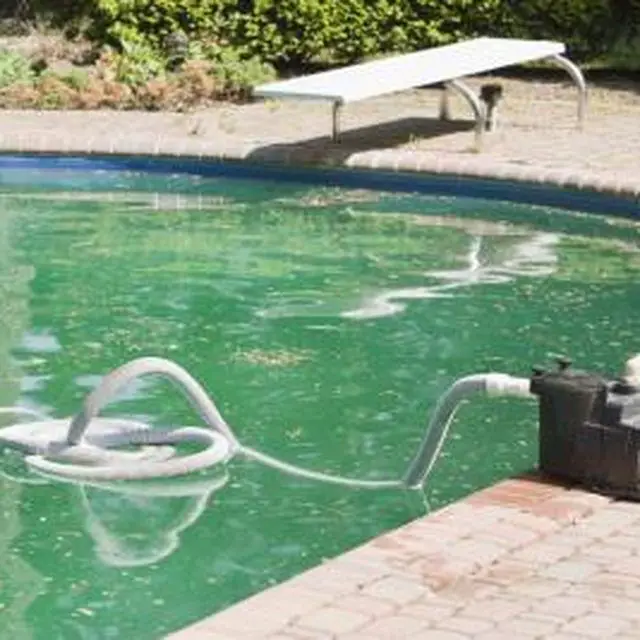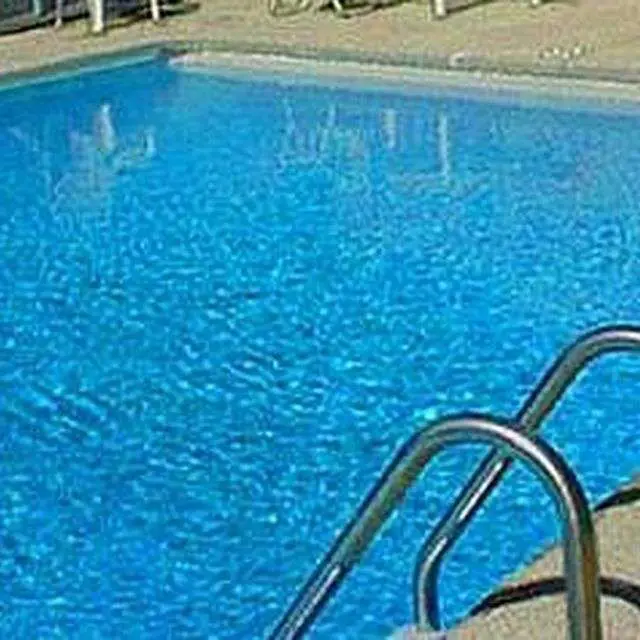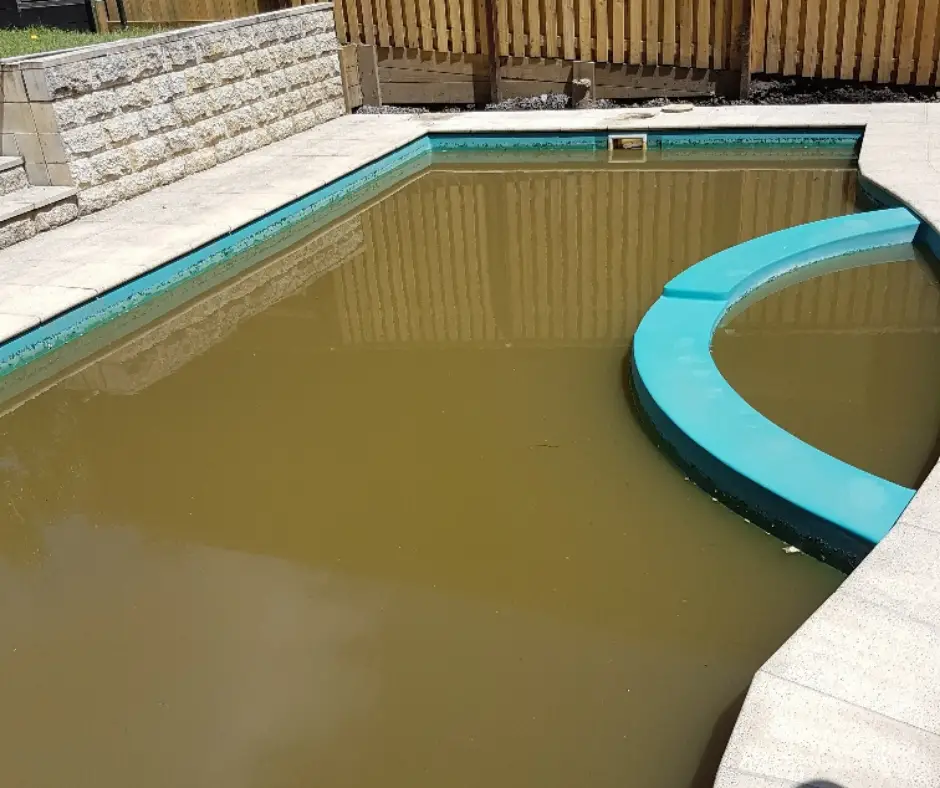How To Fix Cloudy Pool Water
When your pool water becomes cloudy , it can be a difficult and time-consuming process to return it to its ideal clear state. By learning what causes the water to become cloudy and familiarising yourself with a few maintenance methods, youll learn how to fix cloudy pool water in no time at all! But first…
So How To Clear Cloudy Pool Water Fast
Before, we discuss, some of the effective and less time-consuming ways, I just wanna know whether were on the same page or NOT.
Moreover, getting success in fixing cloudy pool water problems to a large extent depends upon how successful have you been in finding out the root cause.
Anyways, I would be walking you through some of the best ways to fix cloudy pool water.
Water Testing
In fact, no one can guess the exact reason behind the pool water becoming cloudy including me and you.
So, whats the solution?
Well, the problem isnt as complex as it seems to be.
All you need to do is to use a highly effective yet affordable pool water testing kit just like this one to find the root cause of the problem.
The good thing about the aforementioned testing kit is that it will allow you to measure a variety of factors that might affect the quality of your pools water so that you can find a solution such as chemical balance, etc to the problem.
Generally, youll find two options when it comes to testing the water.
Either you can purchase test strips that you can dip in your pool water and find out the readings for pH, calcium hardness, alkalinity, chlorine, etc.
OR, you can purchase a test kit that also includes reagents which you can add to your pool water.
The reagent will make the water turn colored based on chlorine present or pH level.
It totally depends upon your preference and as per my knowledge and experience, both will give you the result.
Pool Clarifier
Pool Floc
Common Causes Of Cloudy Pool Water And How To Fix Them
06 June 2017 Tommy
You regularly maintain your swimming pool to make sure the water is crystal clear and healthy to swim in. But without rhythm or reason, you wake up one morning to find it has suddenly turned dull and cloudy. Sound familiar? Well, you’re not alone. It’s a surprisingly common occurrence that is caused by a number of factors, which sometimes makes it tricky to detect and treat.
To put it simply, the water in your swimming pool becomes cloudy when large numbers of small, almost invisible particles reflect back sunlight, which creates an unsightly, murky appearance. And by small we’re talking anything from 0.5 to 5.0 microns .
Swimart pool technicians have tested all types of ‘cloudy’ water, which starts off slightly dull and, when left untreated, can turn completely opaque. Here’s how you can tell the difference:
Dull you hardly notice this stage but this is when pool water starts to lose its lustre
Hazy while you can still see the bottom of the pool, it’s hard to make out the details
Cloudy the water looks milky and, while you might be able to see the bottom of the shallow end of your pool, you’re unlikely to see the bottom of the deep end
Opaque at its most extreme, you cant see the bottom of the pool
Also Check: How To Replace An Inground Pool Liner
Test Your Water Frequently
It’s good to test your pool every week. This will ensure many things that your chlorine levels aren’t getting too high, that the water isn’t becoming too hard or soft and that the acidity stays at a reasonable level. Monitoring your levels won’t necessarily fix all of your problems, but it’s a great preventative measure that will give you the information to fix a problem if it does arise. You’ll better understand why your pool is cloudy and what to do to fix it.
Your pool’s pH levels should stay around neutral about 7.2- 7.8. The closer to 0 your pH levels are, the more acidic they will be, and as levels get closer to 14, your water will become gradually more basic. You’ll need to add acid to keep the pH neutral for low levels, and for levels on the high side, you can use sodium carbonate to bring the acidity down. Stay in that neutral zone to keep your water clear.
When Cloudy Pool Water Wont Clear Up

Stubborn cloudy water issues are a pain! If youve followed the steps above and your water still has a hazy appearance, there are a few more things you can check.
As we mentioned earlier, take a good, hard look at your pool filter. Does it need new filter media? Age and consistent use eventually take their toll, and your filter loses its ability to capture smaller particles as the media wears out. Also consider if the filter is sized properly to accommodate your pool and support the flow rate of your pool pump.If your filter pressure is lower than normal, there may be a clog in the pump impeller, pump/skimmer baskets, or elsewhere in your plumbing system. Another possibility is a faulty backwash valve. Check to see if theres any air entering the system, and either refill the pool to proper levels or address air leaks as needed.
Check that your pump is operating correctly. Make sure the motor is not overheating and cycling on and off. If the pump isnt circulating for long enough each day, your filter cant do much to help clear your pool water.
Also Check: Where To Buy Pool Shock
More Pool Cleaning Tips
- Chlorine comes stabilized or unstabilized. Stabilized chlorine is coated with Cyanuric acid to prevent Cl2 from evaporating. Unstabilized chlorine, such as sodium hypochlorite, is not treated with Cyanuric acid.
- Sodium hypochlorite, also known as pool bleach, is available as a liquid and is highly concentrated compared to household bleach. Calcium hypochlorite is available as a granular powder or slow-release tablets. Both of these chemicals are used to shock the pool in order to raise the concentration of free chlorine in the water.
- Calcium hypochlorite reacts vigorously with water to release free chlorine but it dissolves slowly. To get the most free chlorine into the water, add it to your pool at night so it wont evaporate as quickly. Youll need to wait 8 hours to use the pool, anyway. The calcium acts as an alkaline buffer.
#LiveBrighter with Direct Energy!
Direct Energy offers the tools and technology to help you buy less of what we sell. Sign up for an energy plan with us today and experience the difference in your home!
Use A Smart Pool Monitor
Smart pool monitors are a great way to stay updated on your pool’s water content. Instead of having to test your water every week manually, the smart pool monitor does it for you, often giving you a digital overview on your phone or computer of your water’s pH levels. Smart pool monitors are great because they eliminate the time it takes to check your pool and let you live your life without having to worry about the content of your pool.
You May Like: Pool Deck Designs Above Ground
An Imbalance In The Calcium Levels
Whether your pools water is hard or soft, it plays a significant role in its appearance. Hard water contains a high concentration of calcium, which can cause your water to appear murky or opaque.
In addition, high calcium content doesnt just distort the appearance of your water but can also damage the pool filter and plumbing, mainly due to calcium accumulation.
Improper Chlorine Or Ph Levels
Second to a dirty filter is improper chlorine or pH levels. When the pH levels are imbalanced, it renders the free chlorine ineffective and the levels decrease. Too little free chlorine forms chloramine and it is this combined chlorine that results in your pools cloudy appearance. It is recommended the combined chlorine level should always read below 0.5 ppm or just under 0 ppm.
A water pH excessing 7.8 will also cause the chlorine to be ineffective at killing bacteria and other natural organisms further affecting the waters quality and risking the overgrowth of things like algae.
You May Like: How Much Does An Above Ground Pool Cost
What Is That Black Stuff In My Pool
- Black algae is the least common and the most difficult to get rid of.
- It has a very strong defense mechanism and deep roots that make it very hard to remove. It will normally look like small, dark black spots on your pool walls.
- To get rid of it, you will need to do heavy brushing, vacuuming, and chlorination.
Deeply unappealing green algae pool
Can You Swim In Cloudy Water
It depends. If the water is so cloudy that you cant easily see the bottom of the pool, nobody should be swimming in it, let alone diving into it. Severely clouded water poses an increased risk of severe injury or drowning because of the lack of visibility and depth perception. But even if the water is only slightly cloudy, its still not a good idea to go swimming until you understand whats causing it. Cloudy water can harbor all sorts of germs and waterborne pathogens.
Read Also: How To Increase Ph In Pool
Why Is My Pool Cloudy When The Chemicals Are Balanced
When all the pool chemicals are fine but your water is still cloudy, there is a good chance that you have particles in your pool. In this case, a water clarifier is used to collect all the fine particles so that they can be picked up by the filter.
Alternatively, you can use a pool floc , also known as a super floc, which is a chemical that is used to bring all the clouding particles to the bottom of your pool forming a large cloud that you can then vacuum up using a manual pump. The particles collected using a pool floc will not pass through the filter like they would if a water clarifier were used. Make sure that your filter is set on the backwash or waste option when you are vacuuming to avoid any damage that may happen to the filter as a result of clogging.
Can You Swim In A Pool With Cloudy Water

If you suspect that the cloudiness is caused by a lack of chlorine, avoid using the pool until the water has cleared. The bacteria and algae causing the cloudiness in the water can be harmful if ingested and can make you sick.
If your water does have a good chlorine level however you can most likely swim in a cloudy pool. If the pool has a chlorine level above 1ppm the cloudiness is almost always related to filtration or poor water balance. In this case the cloudiness is caused by harmless minerals and other fine particulate.
You May Like: How To Raise Total Chlorine In Pool
How To Clear Cloudy Pool Water
- |October 13, 2020
I hate cloudy pool water as much as I hate cloudy lemonade . Theyre ugly, dirty, and generally not ideal for swimming thanks to a number of potential health risks.
The worst part? Cloudiness can strike your pool in a matter of hours, leaving you scratching your head as to what exactly went wrong.
In this article, Ill walk you through the exact steps to identify, clear and prevent a cloudy pool for both inground and above ground pools.
Need a quick answer? The cause is either chemical imbalance, circulation/filtration issues, or environmental effects. To fix it, youll first want to test your pool chemistry to make sure everything is in balance, then throw in some clarifier or flocculant to clump the debris. Your filter will take care of the clumps and voilà clear water.
Skip to:
What Makes Pool Water Cloudy
Lack Of Chlorine
Cloudy pool water can be caused by several things. The most common being a lack of chlorine. Without enough chlorine, algae and other bacteria begin to grow within the water, causing it to look hazy, and eventually to turn green.
Fine Particles
Another common reason why pool water turns cloudy is a build up of fine particles in the water. At their very best, sand filters only filter down to around 20 microns. Anything finer than that isnt able to be easily filtered and will generally pass right through the filter and back into the pool. As these particles build up they will cause the water to look cloudy.
Poor Filtration
Another cause of cloudiness in pool water is poor filtration. When new, the sand used in pool sand filters is full of sharp peaks and valleys . Dirt, dead algae and other particles larger than 20 microns are trapped in the valleys as water passes through the sand.
As water passes through the filter, those peaks and valleys are gradually worn away however. The more these peaks and valleys are worn away, the less effective the filter is at trapping debris. Eventually, the sand is now longer able to effectively keep the water clean and needs to be replaced. Typically pool filter sand needs to be replaced every 5 or so years to stay effective.
If your pool has a cartridge filter, you face a similar issue. The paper filters found in pool cartridge filters degrades over time and should be replaced every 5-7 years.
Pump Run Times
Dead Algae
Don’t Miss: When Do Pools Open In Ohio
Clean Or Replace Filters
A poor water-filtration system can be a big problem. If your water cannot filtrate properly, it will not remove foreign particles.
As your pool is already in early phases of algae growth, you will need to thoroughly clean or replace the filter/s.
Sand filters should be regularly backwashed to drain / waste and cartridge filters should be replaced every 200 hours or typically 12-18 months.
Make sure your pump and filter is the correct size for your pool. Also consider the duration of time your filtration system is running.
Most homes will need 6-10 hours of operation. This will all depend on the amount of use, the season and size of your pool.
Option : Use A Pool Clarifier To Clear Cloudy Pool Water
Using a pool clarifier will help eliminate all the smaller particles that the filter cannot remove. Pool clarifiers gather the tiny particles that pollute the water and bring them together to make larger clumps that a filter can easily pick up. Pool filters cannot always pick up the smallest bits, so clotting them together makes cleaning up easier. When pouring in the pool clarifier, keep the filter running and ensure that your pH levels are good to go.
You May Like: Best Hot Tubs For The Price
Give The Pool A Shock
How To Know If Your Chlorine Is Imbalanced
The wider the range between free and total chlorine, the more combined chlorine is present in the water. Combined chlorine should always read below 0.5 ppm or just 0 ppm, if possible. This means you should test chlorine levels on a daily basis and adjust it as appropriate before there’s excess chloramine, especially during the summer when it’s hot and the pool is used heavily.
Safe pH Level for Swimming
The correct level of pH in a swimming pool should be between 7.4 and 7.8, with 7.6 being the ideal level.
Recommended Reading: How Much Shock To Add To Pool
How To Shock A Swimming Pool
What Is Free Chlorine?
It is unbound chlorine that is “free” to sanitize.
Causes Of Cloudy Pool Water

There are several different causes that can cause the clouding of pool water. Let us take a closer look at them:
Imbalanced chemicals: An imbalanced chemical composition is one of the major causes of clouding up of pools. There are different imbalances that may occur such as calcium hardness, alkalinity, pH, chlorine level imbalance, or changes in cyanuric acid composition.
Faulty filter: Faulty filters cause poor filtration of the water. This can happen due to worn out or clogged cartridges of the filter or if there is scaling on the filter.
Mineral deposits or other environmental factors: The cleaning process of the pool water can also be impeded by the build-up of leaves, pollen, or dust. Other environmental contributors to the cloudy pool water are bird droppings, run-off water, or insects. Outside chemicals like silicates, sulfates, phosphates, and nitrates are often carried into the water by the runoff water causing cloudiness of the pool.
Don’t Miss: What Should Pool Alkalinity Be